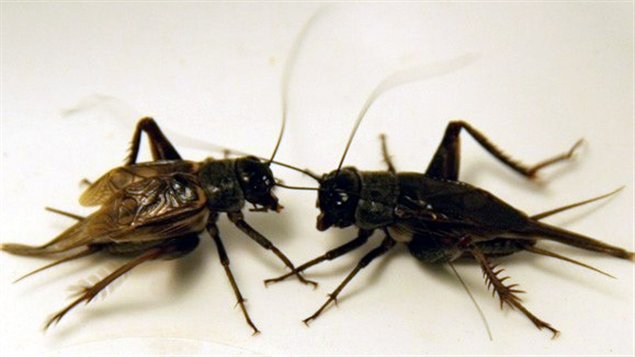It was an unexpected finding. While studying stress in crickets connected with fleeing from predators, a researcher and colleagues discovered a unique trait in a virus that may help in dealing with sexually transmitted diseases in humans.
Shelley Adamo (PI) is a Professor in the Department of Psychology and Neuroscience at Dalhousie University in east coast Nova Scotia.
ListenIt’s a virus that seems to promote sexual activity, but there’s a drawback, it renders the host sterile.

Professor Adamo and her team of undergrad Ilya Kovalko, and post-doctoral fellow, Russell Easy, were initially studying stress responses in crickets. Adamo had noticed that the colony of crickets she was using were engaging in more sex than usual, but otherwise, were acting normally. There was no suspicion of an infection at first as usually when infected animals will become lethargic and stop eating, which was not the case here. But then, in spite of the increased sex, she then noticed the females stopped laying eggs.
She contacted a renowned insect virologist colleague, David Stolz, and they found the crickets had been infected by the “cricket virus” or IIV-6/CRIV.
It turns out the lizard predators she had brought in for the stress test had the virus, discovered over a decade ago, but while the lizards were unaffected, the virus has a strange effect on crickets.
The virus rendered the crickets sterile and changed their behaviour by increasing mating activity, a cricket sexually transmitted disease.
Professor Adamo says viruses try to reproduce themselves adopting different strategies to do so. In this case, the virus does not want the host to die, so one system it can hijack without killing the host, is the reproductive system.
The researchers are unable as yet to determine how the virus seems to be affecting communication between the immune and nervous systems.
It seems to shut down the typical illness response of loss of appetite and energy while keeping the cricket, more likely to mate, and therefore to spread the virus.
Professor Adamo thinks studying this parasitic manipulator may have wider implications. Sexually transmitted infections in humans run the gamut from viruses to bacteria. She says studying this simpler model in crickets may yield information as to how STD’s use pathways to suppress sickness behaviour in humans.
The study is published in the Journal of Experimental Biology
.







For reasons beyond our control, and for an undetermined period of time, our comment section is now closed. However, our social networks remain open to your contributions.